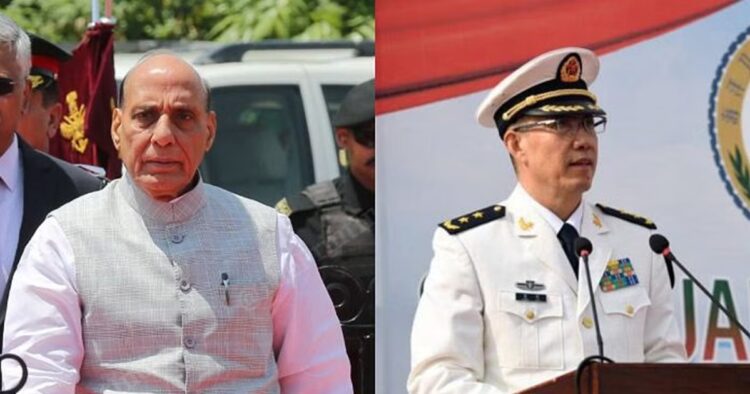On Wednesday, Defence Minister Rajnath Singh will meet with his Chinese counterpart Admiral Dong Jun Wedne, the first day of his visit to Vientiane in Laos. They will review efforts to ease military tensions between the two countries. Additionally, the meeting between Singh and Dong will come just two days following External Affairs Minister S. Jaishankar met with his Chinese counterpart Wang Yi on the margins of the G20 summit in Brazil.
The meeting between the two foreign ministers is the first since the disengagement process started at the Line of Actual Control (LAC) late October. In his remarks, Jaishankar noted the “importance” of India and China’s relations and their role in international politics. The minister added that he was “glad to note that on the ground, the implementation of that understanding has proceeded as planned”. He also wrote a post on X praising the progress in the process of disengagement at the LAC.
Singh and Dong are expected to discuss the LAC situation more deeply and work towards arriving at a convergence regarding de-escalation. Both the Indian and Chinese militaries had on 21 October assigned an agreement to disengage from the Depsang Plains and Demchok. They had also agreed to restart patrolling. On 12 November, India and China completed their first set of patrols in the Depsang Plain. According to the media reports, India’s focus is to undertake a larger de-escalation along the LAC, which would mean that additional troops brought in on both sides since April 2020 move back to their location
In China, the defence minister is a largely ceremonial role and is the public face of military diplomacy with other countries. Unlike defence ministers of democracies like India and the US, the Chinese defence minister does not have command power, which is with the Central Military Commission (CMC). Dong was neither added to the CMC nor appointed a state councillor, making him a defence minister with no power to make decisions

















Comments